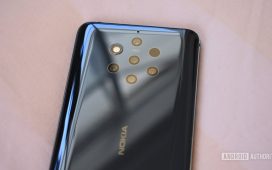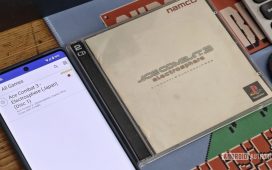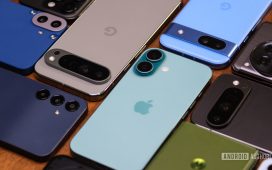There are oh, so many strange things about the new Galaxy S25 Edge. Yes, it’s thin, and yes, it’s made from a durable mix of titanium and top-tier Gorilla Glass, but once you get past that, I am simply confused. It has a small battery that’s not silicon-carbon, slow charging with no magnetic ring for Qi2 accessories (shocker), and, wait for it, only two cameras. That’s one fewer camera than the standard Galaxy S25 and S25 Plus carry, and half the number of the top-tier Galaxy S25 Ultra. The last time we saw a non-folding Galaxy device with only two rear cameras was back on the Galaxy S10e.
Yet Samsung’s all-new, razor-thin flagship packs three times the megapixels of its more affordable siblings. Its two sensors combine for a remarkable 212 total megapixels, which would be enough resolution to put almost any triple-camera device on our list of the best Android camera phones (provided the software was just as good, of course). On the dual-camera Galaxy S25 Edge, however, the balance is off. There are so many megapixels packed into its primary sensor that everything else feels like an afterthought, and that’s not good enough for a phone that costs this much. Here’s why.
Is this method? Or just madness?
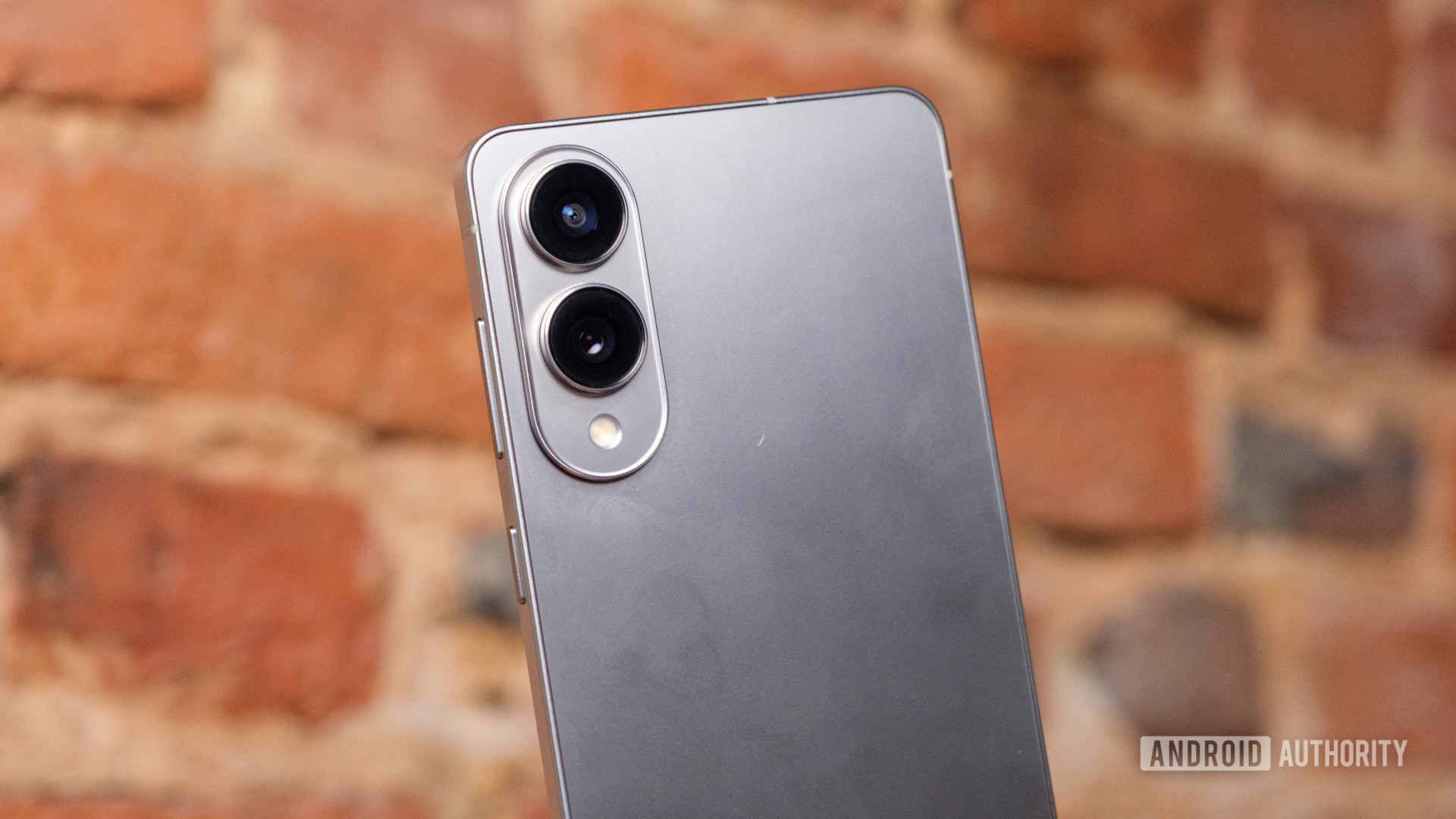
Ryan Haines / Android Authority
Before I start complaining, let me get one thing clear: The Galaxy S25 Edge’s 200MP primary camera is good — excellent, even. Its 12MP ultrawide camera is, well, solid at best and serviceable at the absolute worst. We’ve seen both of these cameras before, the former on the top-tier Galaxy S25 Ultra, and the latter on the more approachable Galaxy S25 and Galaxy S25 Plus. That combination is both the good news and the bad news.
On the bright side, we already knew Samsung’s 200MP primary camera was very good. It turned in impressively sharp shots during my review of the Galaxy S25 Ultra, even when binned down to a more manageable 12MP by default. It also handled my optical crop needs brilliantly, which is good since I punch in to 2x almost by default — sorry, fans of the wide focal length. However, the primary camera on the Galaxy S25 Ultra was only one piece of a well-rounded setup. It knew when to hand off responsibility to Samsung’s pair of telephoto sensors, lending a hand with extra detail as needed but ultimately stepping back for much of the zoom work.
The Galaxy S25 Edge’s cameras are equal parts Ultra and Plus… but not as reliable as either.
Samsung also made a fairly large (for Samsung) fuss about bringing an all-new, amped-up ultrawide camera to its Galaxy S25 Ultra. It ditched the previous 12MP sensor that we’d all gotten used to for a super-sharp 50MP version with the same lovable 120-degree field of view. Naturally, this seemed like the new direction for Samsung’s most premium flagships. That’s not the case on the Galaxy S25 Edge. Despite costing nearly as much as the Galaxy S25 Ultra and only having two cameras, Samsung decided that its lower-resolution 12MP ultrawide sensor was good enough.
And, at the end of the day, maybe it is. Perhaps the fact that its 50MP ultrawide sensor bins to 12MP by default ultimately steered Samsung this way. However, I can’t help but feel disappointed by the Galaxy S25 Edge’s startling lack of flexibility. Despite having a whopping 212 megapixels at its disposal, the phone can only swing from 0.6x (ultrawide) to 10x zoom before calling it a day. That’s less range than the smaller Galaxy S25 duo with its triple-camera setup, and it just matches the Galaxy Z Flip 6, which achieves the same max zoom despite carrying a 50MP primary sensor.
Then, as if to make life more confusing, Samsung offered some reasoning behind its decision during our initial Galaxy S25 Edge briefing. It declared that users spend most of their time between 0.6x zoom and 5x zoom, so it decided to focus on that range. It decided that a massive primary camera backed by AI processing was a more effective way to do so than to stick with the flexible trio that worked brilliantly, thicker camera bump or not. So, with a strict zoom limit in mind, Samsung gave us two cameras and called it a day.
More megapixels doesn’t have to mean better zoom
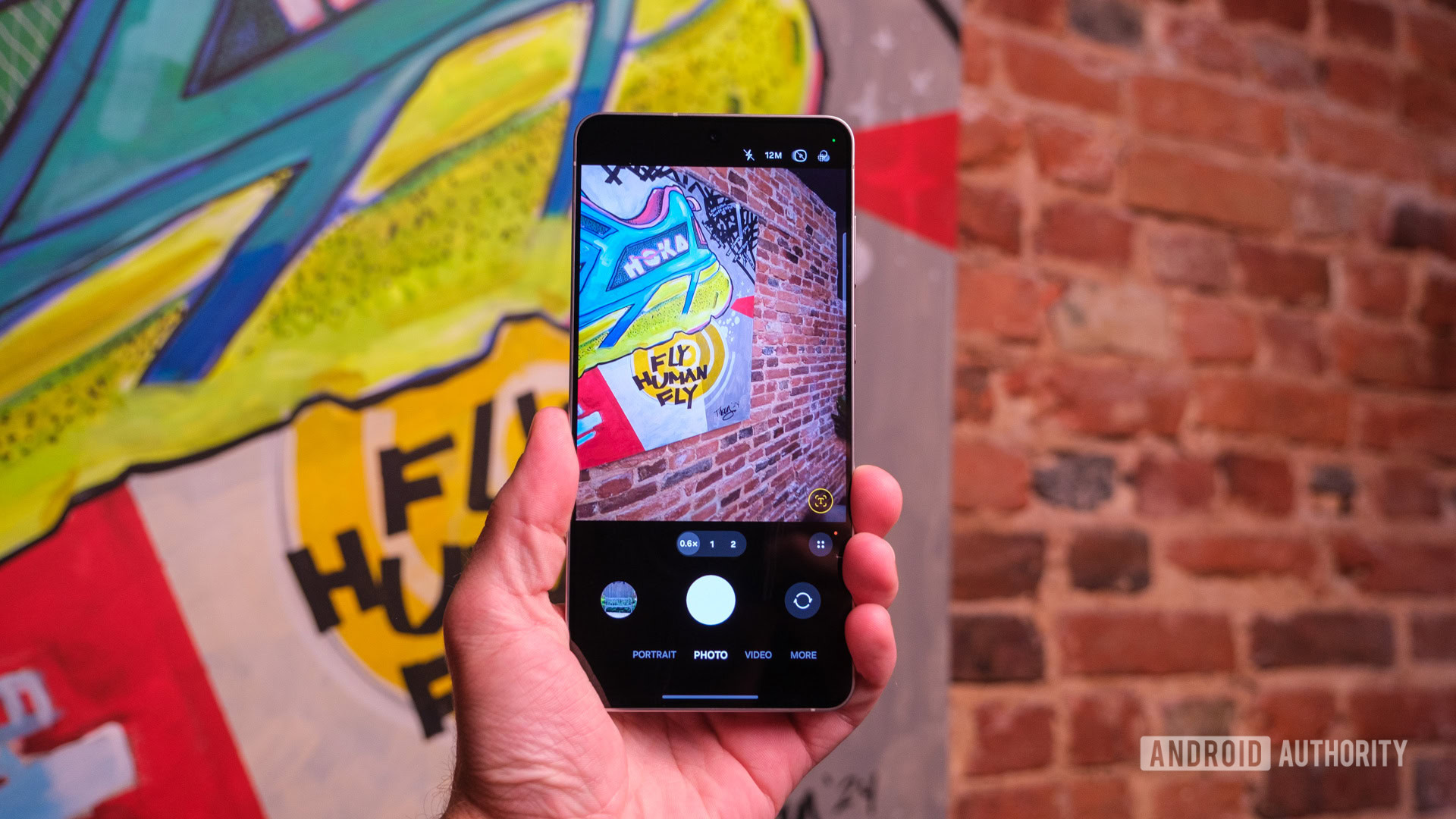
Ryan Haines / Android Authority
Of course, to further illustrate my point — or maybe prove myself wrong — I decided to have a little zoom test. I grabbed my shiny new Galaxy S25 Edge, its closest in-house rival, the Galaxy S25 Plus, a similarly priced dual-camera phone in the Motorola Razr Ultra, and the best two-camera option that Apple makes in the iPhone 16. Then, I found a simple little garden scene that I walk past every single day, and I let each camera do its thing. Here’s how my quick test shook out:
Ultrawide
The ultrawide angle is, to my eye, the Galaxy S25 Edge’s greatest weakness. It doesn’t deliver a terrible shot, but it doesn’t stand out as especially good, either — it’s just kind of okay. Of course, I largely expected this to be the case, as it’s working with the same sensor as its Galaxy S25 Plus sibling, so it makes perfect sense for the two shots to come out almost identical.
However, Motorola’s 50MP ultrawide sensor smokes the pair of them. If you zoom in on the Razr Ultra’s result, you’ll notice heaps more detail, whether in the bricks, the green of the plants, or all the way back to the bench that we’ll get closer to in just a second. Motorola’s Pantone-certified colors are also even punchier than Samsung’s — not something I ever thought I’d say. Unfortunately, the cool color profile of the iPhone 16 makes its result look a bit dead by comparison, even if its details are fine. Apple could probably stand to bring a higher resolution ultrawide sensor to its base iPhones, but that’s a debate for a different day.
1x Zoom
Jumping to 1x zoom, the default view, the Galaxy S25 Edge looks much more competitive thanks to its massive primary sensor. There’s plenty of detail throughout the plants, and you can pick out a few birds on the hanging poster to the left. It still lands roughly in the middle regarding color profile, with the ice-cold iPhone on one end and Motorola’s Pantone partnership on the other. That said, I think the Razr Ultra offers a slightly sharper look at the bird poster to the left side despite its lower 50MP resolution.
2x Zoom
At 2x zoom, the 200MP primary sensor really comes into its own. To my eye, its central crop simply holds onto much more resolution than the Galaxy S25 Plus’s 50MP camera can match before it switches to the telephoto for longer distances. The Razr Ultra packs decently sharp foreground details, too, especially if you zoom in on the plants to the left, though I can’t help but feel like it makes the bench and chair in the background look a bit too artificially processed. The central crop from Apple’s 48MP primary camera is also by far the softest of this set, with plants losing details left and right, and the arbor above the bench turning into a mix of pinks and greens when you get close.
4x Zoom
At 4x zoom, something like no-man’s-land for these cameras, the Razr Ultra’s warm profile starts to do a lot of heavy lifting. Although it’s beginning to lose a bit of sharpness, the vibrant greens and the strings of lights trick the eye into thinking it’s a better photo than Samsung’s relatively flat colors. This time, the Galaxy S25 Edge and Galaxy S25 Plus show different strengths. The more expensive flagship looks better for its contrast — look at the fine lines on the leaves to the left — while the triple-camera version shines with better details through the wall of ivy at the back. Both Samsung devices also present a more natural look at the bench, since Motorola’s processing has oversharpened it too much.
10x Zoom
Last but not least, we have 10x zoom — the Galaxy S25 Edge’s upper limit. While I might not like that this is where Samsung’s $1,100 flagship calls it quits, I think it once again offers the best detail of the bunch. Both of Samsung’s images look the most color-accurate, while the Edge shows sharper details in the brick walkway and better contrast in the bushes behind the bench. Something about the Razr Ultra’s finished product looks a bit too dark, like it’s pumped up the saturation once again. Finally, the iPhone 16 offers, well, just not a very good shot, being a bit too bright and soft from top to bottom.
The problem here is that this is where my zoom comparison stops. Despite having a $1,100 phone in my hand with a 200MP primary camera, Samsung has no interest in letting its combination of sensor cropping and digital zoom go beyond a perfectly average length. I could have kept going up to 30x zoom with the Galaxy S25 Plus and the Razr Ultra, seeing what a 3x telephoto sensor and Motorola’s 50MP primary camera can do, but the Galaxy S25 Edge said no.
I guess this is Samsung quitting while it’s ahead… ish
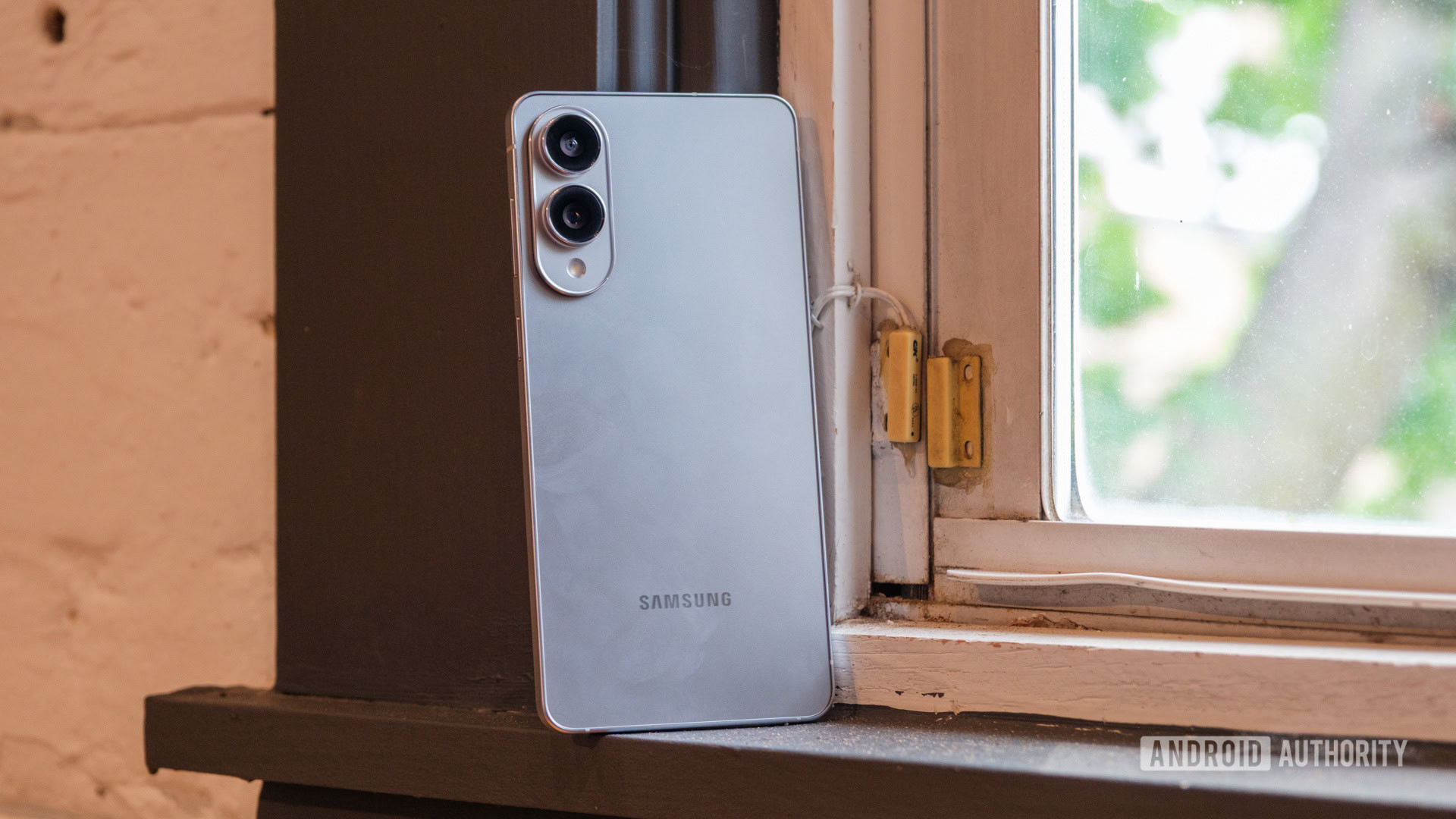
Ryan Haines / Android Authority
I won’t lie — I thought I would get to this point and feel vindicated in thinking that Samsung had made a terrible decision for its Galaxy S25 Edge cameras that would keep me from calling it one of the best Samsung phones around. That’s still the case, but it’s not nearly as cut and dry as I might have expected. Even though I’m thoroughly disappointed that the Galaxy S25 Edge won’t zoom past 10x, I simply can’t argue with the fact that it’s sharp across every focal length that it does cover. I’d happily post any of the sample shots I showed off above, and that’s not something I can say about all of the other devices, at least, certainly not the iPhone 16.
From that perspective, I get it. I understand why Samsung let 200MP and a little digital zoom do all of its heavy lifting. I can even admit that if the Edge went past 10x zoom, I’d probably be less inclined to post the shots I captured because they’re not usually very impressive.
However, I still don’t like spending this much money on a relatively inflexible camera. Even though Samsung is right, and most people will spend their time between 0.6x and 5x zoom, that’s not an exclusive rule. There will be times, like at a concert or while birdwatching, when 15x, 20x, or even 30x zoom is a must-have, and this $1,100 phone will let them down. When it does, those users will look at their friends with Pixel 9 Pros, iPhone 16 Pros, or even Samsung’s own Galaxy S25, and be a little envious of the money they saved and the camera flexibility they earned.


